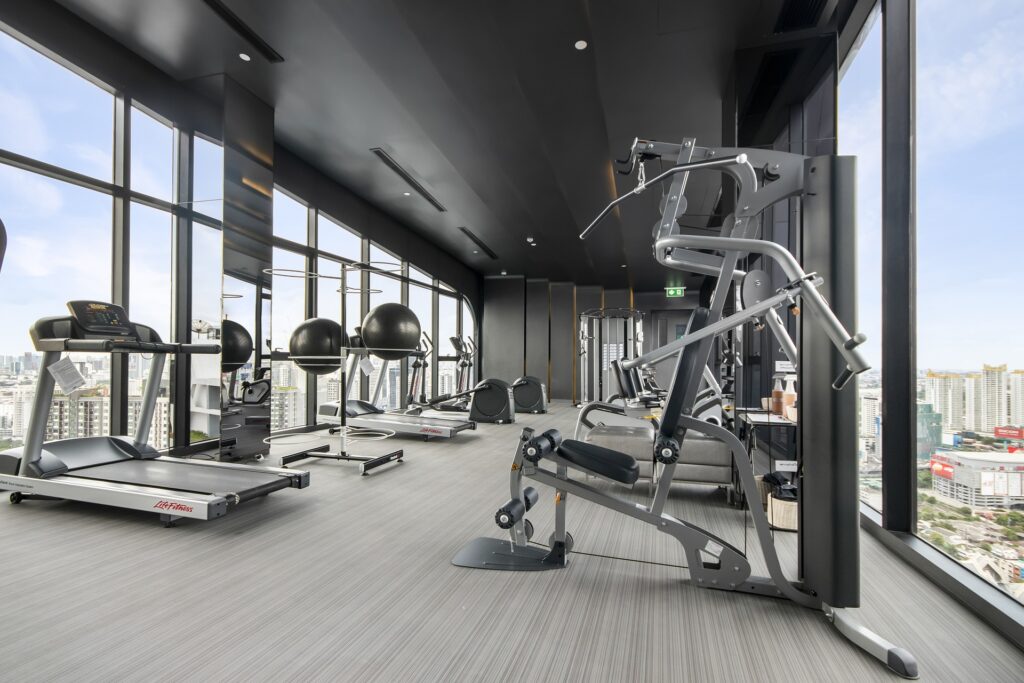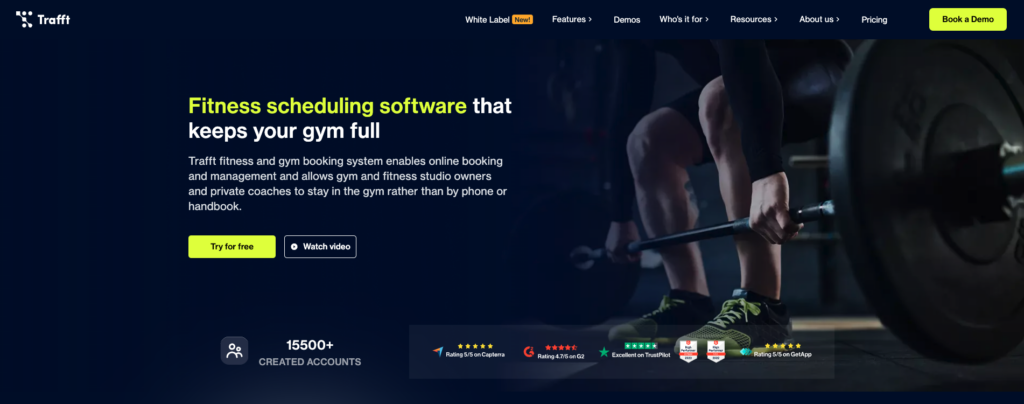Have you ever considered entering entrepreneurial waters and opening a gym? With people becoming increasingly aware of the importance of proper exercise, you are likely living in the best time for this kind of endeavor.
However, starting a gym is a huge task to undertake. Embarking on this journey can be exhilarating, but like with any other business venture, taking the time to properly plan it all is crucial for turning your dream into a successful reality.
With so many things to keep in mind, it can get pretty overwhelming. That’s why we created this step-by-step guide to help you navigate the whole process. From getting the proper regulations and finding the perfect location to equipment, staffing, and much more.
We’ll walk you through the essential steps needed to launch your own gym startup.
Understanding the Importance of Research and Planning When Starting a Gym
While the question of how to start a gym business may seem simple enough, the answer isn’t as easy as buying a few pieces of equipment and renting a basement. If you want to start on the right foot, your first step should be market research.
Conduct market research
Market research is the foundation for a successful gym business. It involves gathering and analyzing data to understand the dynamics of the fitness industry and your target market. Start by looking into your target audience. Here are some questions you should have an answer to:
- How old are they?
- How much do they earn on average?
- Are they mostly male or female?
- What are some fitness goals they likely have?
Consider administering surveys or focus groups to gather even more feedback on their fitness habits, preferred workout routines, and expectations from a gym facility. These valuable insights will help you stand out from the competition.
The key here is to know your future clientele and be the solution to their problems and needs. Don’t forget to also look into other gyms and what they offer. Exploring competitors will help you understand how to price your services and how to stand out from the crowd.
Create a proper business plan for your gym startup
Now, with data under your belt, crafting a business plan will not be just a shot in the dark. Don’t rush this step; be as thorough as possible.
A business plan is a must for anyone looking to avoid going down the wrong path and ultimately spending too much money on unnecessary things.

Not every market will be perfect for a gym or a specific gym type. What’s already out there? Is something missing, or can something be improved? How much can you charge, and what are some additional services you can offer? How will you further grow your business and where do you see it in five years?
The business plan should outline financial predictions, marketing approaches, and a thorough strategy for running the gym.
Finance your gym business
After creating your business plan, the next step is securing the financing needed to open your gym. This is never an easy task, but knowing how to go about it is half the battle.
Getting money from family and friends is often a great option to avoid interest rates. However, it usually isn’t enough to gather all the financing needed.
Here are some bank loan options you should look into:
- Small Business Loans (SBA) - These are backed up by the government, reducing the lender's risk and offering borrowers a lower interest rate. There are many different loan options under this umbrella, so you will likely be able to qualify for at least one.
- Business Line of Credit - This is essentially a revolving credit line that can be drawn from as needed. The good thing about this option is that you will always have money available, so you don’t need to constantly apply for new loans. Additionally, you will be paying the interest only on the amount you spent, not the whole available limit.
- Equipment Financing - When starting your gym business, the equipment cost can easily add up to a significant amount. With this loan, the equipment itself is collateral and will secure you more favorable terms and interest rates.
- Traditional Bank Loan - Traditional term loans from banks or credit unions are a common option for financing gym startups. These loans provide a lump sum of capital, repaid over a fixed period, typically with a predetermined interest rate.
Before applying for any loan, it’s important to thoroughly research your options and compare terms and interest rates. Consider hiring a financial advisor or small business consultant to help navigate the loan application process.
Navigating Legal Requirements and Regulations for Gyms
While learning how to start a gym, you need to get familiar with different business structures you can choose from. The right structure is crucial for your gym’s legal and financial framework. Here are the options you can look into:
- Sole Proprietorship - The simplest type of business ownership. One individual owns and operates the gym. It offers complete control and flexibility.
- Partnership - This includes two or more individuals who share ownership and management responsibilities. Depending on the responsibility and liability, it can be general or limited.
- Corporate - A separate legal entity from its owners. It offers limited liability protection. Also, it requires more formalities and administrative responsibilities.
- Limited Liability Corporation (LLC) - This one combines the limited liability protection of a corporation with the flexibility and tax benefits of a partnership or sole proprietorship. They have simpler management structures and fewer administrative requirements compared to corporations.
Each structure has its implications regarding taxes, liability, and management. When choosing the best one for your gym business, don’t forget to factor in your business and growth plan.
Register your gym business
After choosing the type that suits you best, the next step is to register your business. This is done through the appropriate government authorities at the local, state, and federal levels. The process typically involves obtaining a business license and registering your business name. Registration ensures that your gym is operating legally.
Before opening a gym business, do thorough research on the different permits and licenses you need to obtain. Commonly, these include health department permits, zoning permits, and business licenses. However, they can also include special permits for specific equipment or services offered by your gym.
Once you find the ones you need, the application process is quite straightforward. Fill out the application form, pay the fees, and gather all the necessary paperwork. You should be prepared for potential inspections, which are part of this permitting process.
Protect your gym with the right insurance
When answering how to start a gym, we must also mention the insurance policies you need. Insurance is a safety measure for gym owners, protecting them from various risks that could threaten the business’ financial health.
Selecting the right policy starts by understanding the options available. Some are mandatory, while others are optional.
- Liability insurance - covers claims from injuries or accidents in your gym.
- Property insurance - covers your gym's physical aspects, such as equipment, inventory, etc., from fire, theft, or vandalism.
- Worker’s compensation insurance - This policy covers medical expenses and lost income for employees who sustain injuries at work.
- Equipment Breakdown Insurance - covers the repair or replacement costs of essential machinery and equipment. It includes treadmills, weight machines, and HVAC systems.
When choosing the right insurance for your business, compare quotes from multiple providers. This will ensure you’re getting adequate coverage at a competitive price.
Selecting a Location and Getting the Equipment
With so many people focusing on their health, gyms are getting all the buzz these days. Many aspiring business owners wonder how to open a gym and make it a successful venture. But more often than not, they forget about the importance of the location or get stuck buying unnecessary equipment.
Find a perfect location for opening a gym
Choosing the right location for your gym is crucial for its success. Stay away from industrial zones and the outskirts of town, where people don’t spend a lot of time. It’s always best to choose a location close to residential areas and public transportation hubs. A convenient location will attract more members and encourage regular attendance.
Buy only the necessary equipment
But how do you know what equipment to include when opening a gym? The best advice we can give you is to start with the basics and build your equipment collection over time.
Buying fancy machines that nobody knows how to use or too many of the same kind is an unnecessary expense you should definitely avoid. Including a few treadmills, stationary bicycles, ellipticals, and ropes will be more than enough for your cardio zone. As for strength training, offer many dumbbells, weight plates, and a few machines for squats and abs, as well as barbells and leg presses. Matts, ropes, yoga balls, resistance bands, and foam rollers are a must. You should have plenty of them.

Once you establish a clientele, you’ll see which machines are used the most and then consider adding a few of the same kind so people don’t have to wait in line for their turn. Another great way to see what can be added is to simply ask your regulars what equipment they think is missing.
Design your space
Once you get your equipment, how are you going to place it? The general rule is to leave the layout open and spacious. Create different zones, like the one for cardio and the other one for strength training. Include mirrors, neon signs, and wall art to keep people motivated. Don’t forget the area for the group classes and another for the CrossFit zone to ensure there is something for everyone.
The layout should encourage flow and movement, providing a welcoming and motivating environment for individuals of all fitness levels.

Offer some amenities to increase comfort
When thinking about how to start a gym business, many people don’t consider the amenities they can offer. Some are obvious, like showers, locker rooms, and maybe even parking or Wi‑Fi access. But for a real wellness‑center vibe—and to boost member satisfaction—you might consider a slow juicer nutrient retention–optimized juice bar using a high‑quality cold‑press slow juicer for maximum vitamins and enzymes. Here are some more options to consider including:
- Juice bar
- Lounge area
- Towel service
- Pool or a spa
- Massage services
- Occasional free group classes
While this may seem excessive to you, keep in mind that having some variety will give you an opportunity to price your membership much higher. Additionally, this doesn’t have to be something you need to implement overnight; it is more like something you can gradually add as time goes on.
Leveraging Operations Management Tools for Gyms

Are you one of those owners hesitant to implement any kind of technology while starting a gym? Well, this may limit your business' growth. Utilizing advanced gym management software like Trafft can help you seamlessly handle various aspects of your business operations. This includes membership management, class scheduling, and secure payment processing.
Boost your gym business with the right tools
Your clients will be able to schedule a group class or a session with their favorite personal trainer in just a few minutes. So, no need to have extra staff answering the client calls or the fear of double booking.
With many payment integrations, like PayPal and Stripe, you can now implement card transactions. And your clients don't have to think about bringing cash to their appointments.
The ultimate goal should be to deliver exceptional service to your members. So, why not let Trafft simplify those administrative tasks everyone hates?
Leveraging the Trafft mobile app or online platform will allow your clients to see your offerings whenever they want and schedule the ones they need. You can also give special coupons and discounts to your most loyal customers.
Empower members to engage with your gym anytime, anywhere, boost their overall experience and satisfaction, and grow your gym business with Trafft.
Developing Branding Strategies and Marketing Plans
Opening a successful gym business is a tough nut to crack with a big competition to beat. That’s why taking the time to establish your unique brand identity and market it the right way is essential for business growth.
Build a brand identity

Image by rawpixel.com on Freepik
You need to differentiate yourself from the rest, make people notice you, and pique their curiosity so they come knocking on your door. Building a brand involves defining your gym's mission, values, and personality. It also means translating these components into visual elements like logos, colors, and fonts.
Establish your social media presence
Setting up your social media profiles and website is a great way to reach people beyond those living in the neighborhood. Consider offering some promotions and limited-time offers to create a sense of urgency with your desired audience. Paid Google and Instagram ads can further help you reach more people and get more members enrolled.
Utilize all marketing tools
Other often forgotten digital marketing channels, like email campaigns and search engine optimization (SEO), can help you grow your clientele further. Although these channels aren’t particularly hard to use, they do require some background knowledge, so consider hiring a marketing agency.
A well-crafted marketing campaign shouldn’t only focus on the digital world. It should also include different events and local promotions that can foster a sense of connection and community.
Building Your Team - Staffing and Training for Gym Business
When talking about starting a gym business, we must mention the importance of employing qualified fitness trainers and staff.
During a hiring process, prioritize candidates with relevant certifications, experience, and a genuine enthusiasm for health and fitness.
Unfortunately, even people with little to no fitness knowledge will often try to present themselves as experienced personal trainers. This can be a huge problem for your business as dissatisfied clientele will rarely say something but will surely leave if they fail to meet their fitness goals. Taking the time to properly select or train the staff will make your business look more professional and make the day-to-day operations run more smoothly.
As for the fitness trainers, look into their certifications. What is their educational background? What credentials have they acquired? If you are feeling kind of lost in this field, here are some reputable institutions granting certificates to personal trainers
- ACSM - American College of Sports Medicine
- ACE - American Council on Exercise
- NASM- National Academy of Sports Medicine
- NCSF - National Council on Strength and Fitness
- USAW – USA Weightlifting
Professional personal trainers will help your clients achieve their fitness goals, so investing in the best ones is a guaranteed way to ensure customer satisfaction.
Once you have all your staff members onboard, providing comprehensive training will ensure they are equipped with the knowledge and skills to excel in their roles. Be sure your staff knows how important empathy and proactive problem-solving are.
Make the point that good customer service goes a long way so your employees know how significant it is in their everyday jobs.
Launching Your Gym Startup and Managing Day-To-Day Operations
Now that we laid some ground and you essentially know how to open your own gym, the story doesn’t end there.
Grand openings bring new challenges that you need to overcome. This step also involves meticulous planning, attention to detail, and careful execution. The ultimate goal is to create memorable experiences for potential members. Here’s a perfect opportunity to include the different events and promotions we mentioned. Creating buzz and excitement among people will make them more likely to sign up for a membership.
Once this grand opening is behind you, focus on managing your day-to-day operations as smoothly as possible. This includes staff scheduling, group sessions, personal training, member inquiries, and facility maintenance. Like with any other service business, maintaining a clean and welcoming environment is crucial for customer retention.
With so many things to keep in mind, it can get pretty overwhelming. That’s why implementing effective gym management software is your best shot to stay on top of everything. Here is how you can use Trafft to successfully manage your gym business:
Interested in learning more? Check out other Trafft’s features to see what you are missing out on.
Monitor and adjust your business strategies
Monitoring customers' behavior is an important step that provides valuable insights into the effectiveness of your current strategies. By looking into key metrics like membership growth, revenue, and customer satisfaction levels, you can see what areas can be improved. In the dynamic fitness industry, being aware of changing market trends will help you facilitate your business growth further.
Whether it's introducing new fitness programs, enhancing member amenities, or optimizing marketing tactics, being responsive to the metrics you see will ensure your gym business stays relevant in an ever-changing landscape.
Conclusion
Opening a gym is an exciting and rewarding endeavor, but it also requires careful planning, dedication, and perseverance. From carrying out thorough market research to securing financing, navigating legal requirements, securing the perfect location, and crafting a perfect marketing campaign. Each step is vital for a successful gym startup.
Lastly, remember that starting a successful gym business is a marathon, not a sprint. Keep your eyes on the goal, be aware of the challenges that may arise, and be prepared to solve them.
With dedication and hard work, you have the potential to create not only an outstanding business but also a thriving community of fitness lovers.






